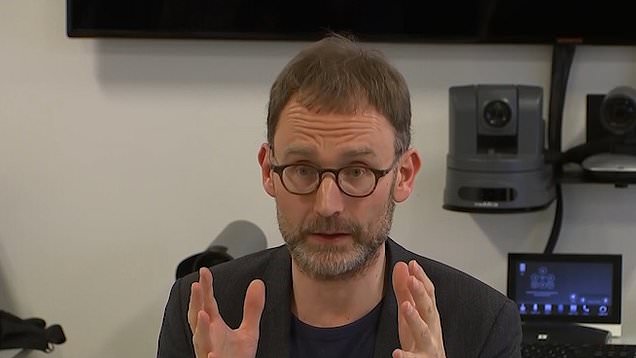
One of the paradoxes of the coronavirus crisis is that the need for public scrutiny of government policy has never been greater, but there’s less tolerance for dissent than usual. That’s particularly true of the work of Professor Neil Ferguson and his team at Imperial College. Anyone questioning Professor Ferguson’s analysis is likely to be met with howls of disdain. Witness the furious reaction provoked by Professor Sunetra Gupta and her team at Oxford when they published a paper suggesting that the Imperial model might have underestimated the percentage of the population that has already been infected. The Financial Times printed a critical letter co-signed by a group of scientists that was reminiscent of left-wing academics denouncing one of their colleagues for dissenting from woke orthodoxy. They used the word “dangerous” in their description of the Oxford research, as if merely challenging Imperial’s model would cost lives, and Professor Ferguson has made the same argument to condemn other critics of his work. “It is ludicrous, frankly, to suggest that the severity of this virus is comparable to seasonal flu – ludicrous and dangerous,” he said.
A more prudent approach would be for the Government not to place too much confidence in any one model, or set of models, but to encourage different teams of experts, working independently, to come up with predictions of their own and challenge their rivals. That’s the tried-and-tested scientific method and it has been bizarre to see respected pundits simultaneously argue that we should be strictly guided by “the science” and that any scientist expressing dissent from the prevailing orthodoxy is behaving “irresponsibly”. That was the same argument used by the Chinese authorities for silencing the doctors who first raised the alarm in Wuhan. They were arrested and forced to confess to “spreading rumours” that “severely disturbed the social order.” Shutting down dissent during an actual war might make sense, but in a war against a virus it is vital that we should stick to the scientific method. As Sir Karl Popper said: “The point is that whenever we propose a solution to a problem, we ought to try as hard as we can to overthrow our solution, rather than defend it.”
We don’t want to repeat the mistakes we made during another viral outbreak, namely the 2001 foot and mouth epidemic. Tony Blair’s government adopted a strategy of pre-emptive culling which led to the death of more than six million cattle, sheep and pigs, with an estimated cost to the UK economy of £9 billion. That strategy was informed by predictive modelling produced by a team at Imperial College led by, among others, Professor Ferguson. Like today, there wasn’t much appetite for questioning his predictions. But we now have good reason to believe his analysis was wrong. Michael Thrusfield, professor of veterinary epidemiology at Edinburgh University, has written two critical reports about the government’s response to that epidemic, concluding that the Imperial College modelling was “severely flawed”.
One person who’s sceptical of Professor Ferguson’s modelling is Anders Tegnell, the epidemiologist who’s been advising the Swedish Government. “It’s not a peer-reviewed paper,” he said, referring to the Imperial College March 16th paper. “It might be right, but it might also be terribly wrong. In Sweden, we are a bit surprised that it’s had such an impact.”
Further Reading
‘“Carnage by Computer”: The Blackboard Economics of the 2001 Foot and Mouth Epidemic’, David Campbell and Robert Lee, republished in Lockdown Sceptics, originally published in 2003
‘Use and abuse of mathematical models: an illustration from the 2001 foot and mouth disease epidemic in the United Kingdom‘, Michael Thrusfield et al, Edinburgh Research Explorer, 2006
‘Physical interventions to interrupt or reduce the spread of respiratory viruses‘, T Jefferson et al, NCBI, July 2011
‘A fiasco in the making? As the coronavirus pandemic takes hold, we are making decisions without reliable data‘ by John PA Ioannidis, Stat, March 17th 2020
‘Neil Ferguson, the scientist who convinced Boris Johnson of UK coronavirus lockdown, criticised in past for flawed research‘ by Katherine Rushton and Daniel Foggo, The Telegraph, March 28th 2020
‘Complicated Mathematical Models Are Not Substitutes for Common Sense‘ by Philippe Lemoine, National Review, March 30th 2020
‘Dissent over coronavirus research isn’t dangerous – but stifling debate is‘ by Toby Young, The Spectator, April 4th 2020
‘Predictive Mathematical Models of the COVID-19 Pandemic: Underlying Principles and Value of Projections‘, Nicholas P Jewell et al, JAMA Networks, April 16th 2020
‘The Tyranny Of Models‘ by William M Briggs, wmbrigs.com, April 17th 2020
‘After Repeated Failures, It’s Time To Permanently Dump Epidemic Models‘ by Michael Fumento, Issues & Insights, April 18th 2020
‘POLICY IMPLICATIONS OF MODELS OF THE SPREAD OF CORONAVIRUS: PERSPECTIVES AND OPPORTUNITIES FOR ECONOMISTS‘, Christopher Avery et al, National Bureau of Economic Research, April 2020
‘How Wrong Were the Models and Why?‘ by Phillip W. Magness, American Institute for Economic Research, April 23rd 2020
‘The Bearer of Good Coronavirus News: an Interview With John Ioannidis‘ by Allysia Finley, Wall St Journal, April 24th 2020
‘Imperial College Model Applied to Sweden Yields Preposterous Results‘ by Philip Magness, American Institute for Economic Research, April 30th 2020
‘The Fatal Hubris of Professor Lockdown‘ by Toby Young, Critic, May 6th 2020
Further Viewing











To join in with the discussion please make a donation to The Daily Sceptic.
Profanity and abuse will be removed and may lead to a permanent ban.